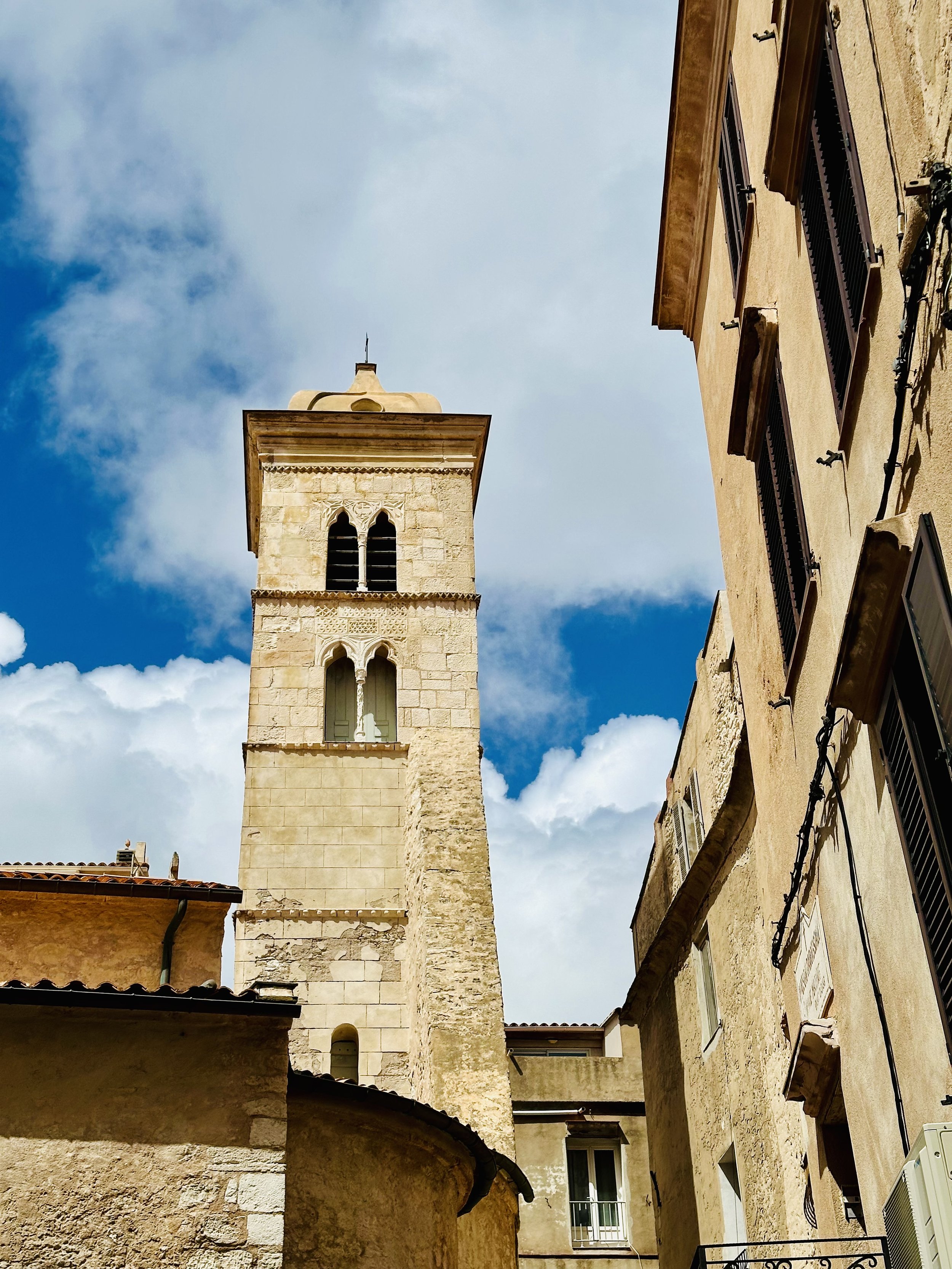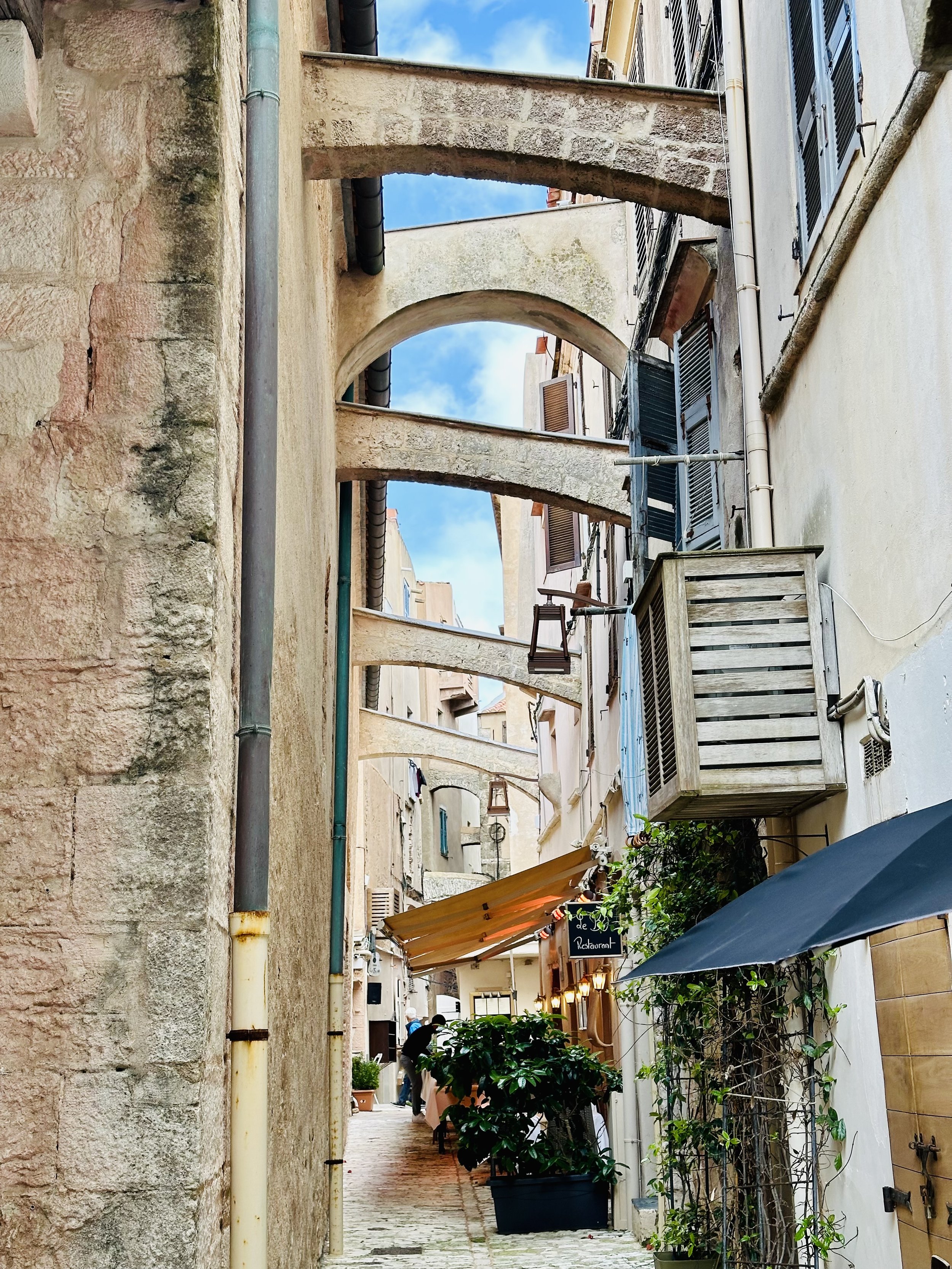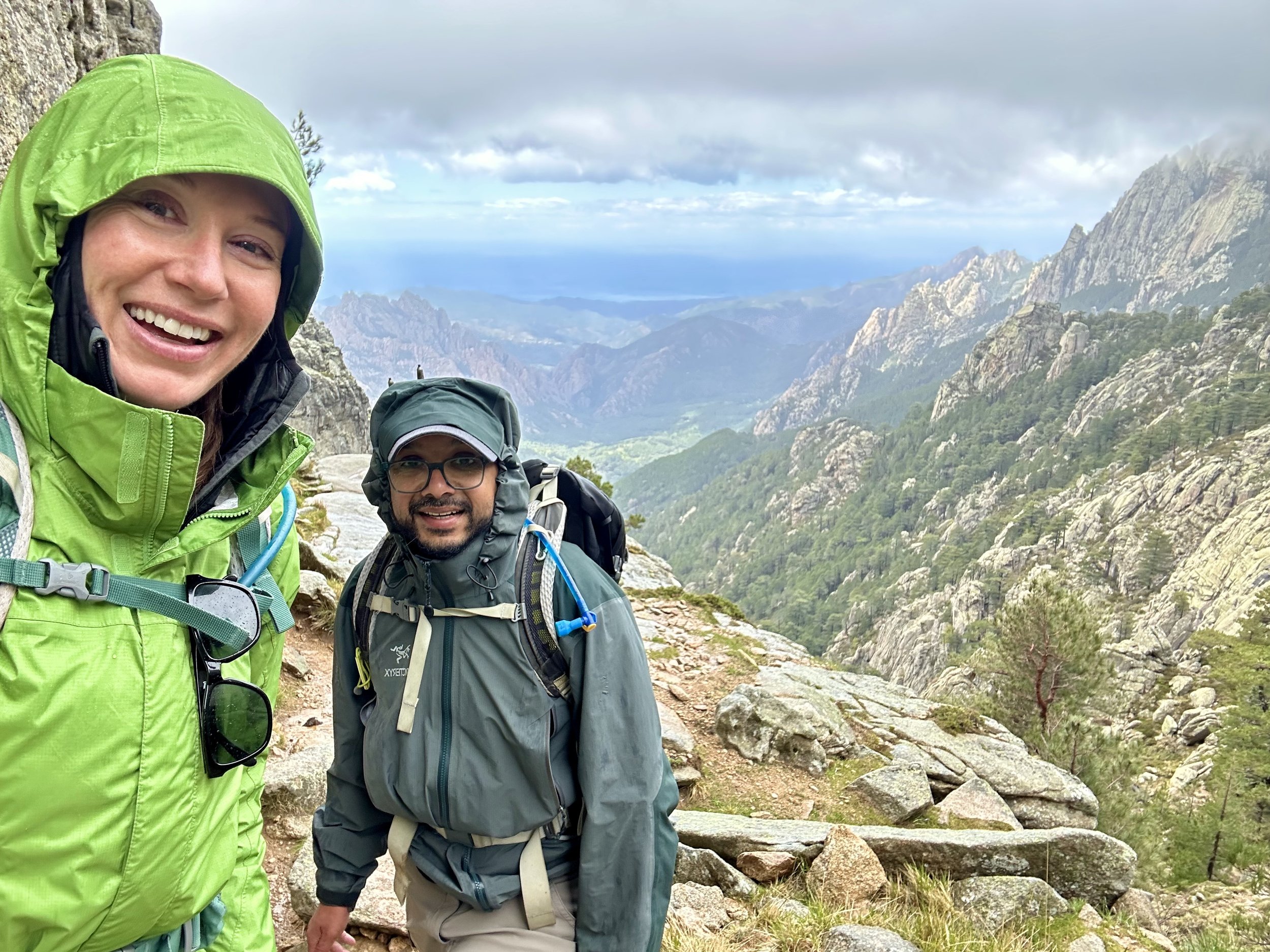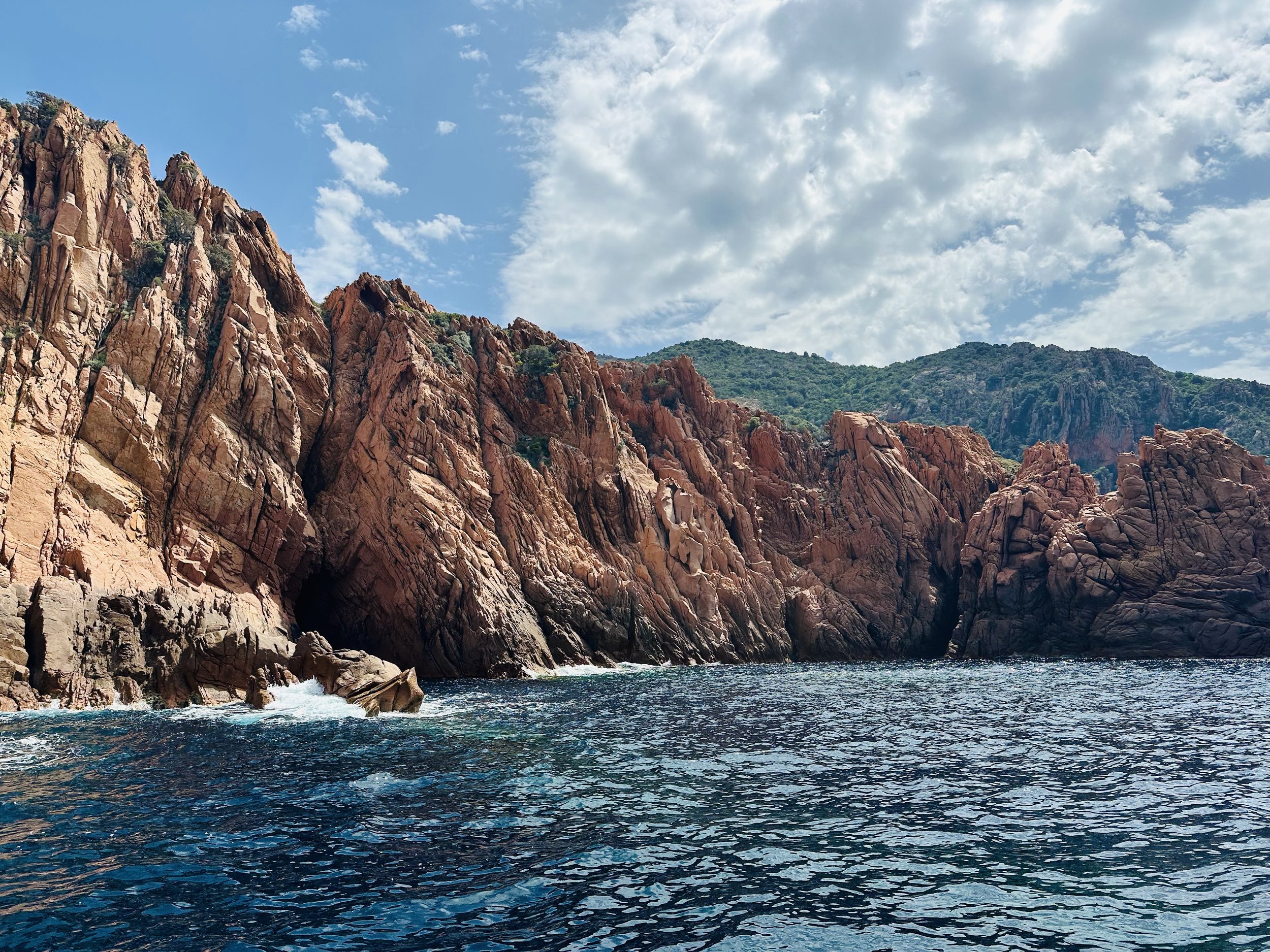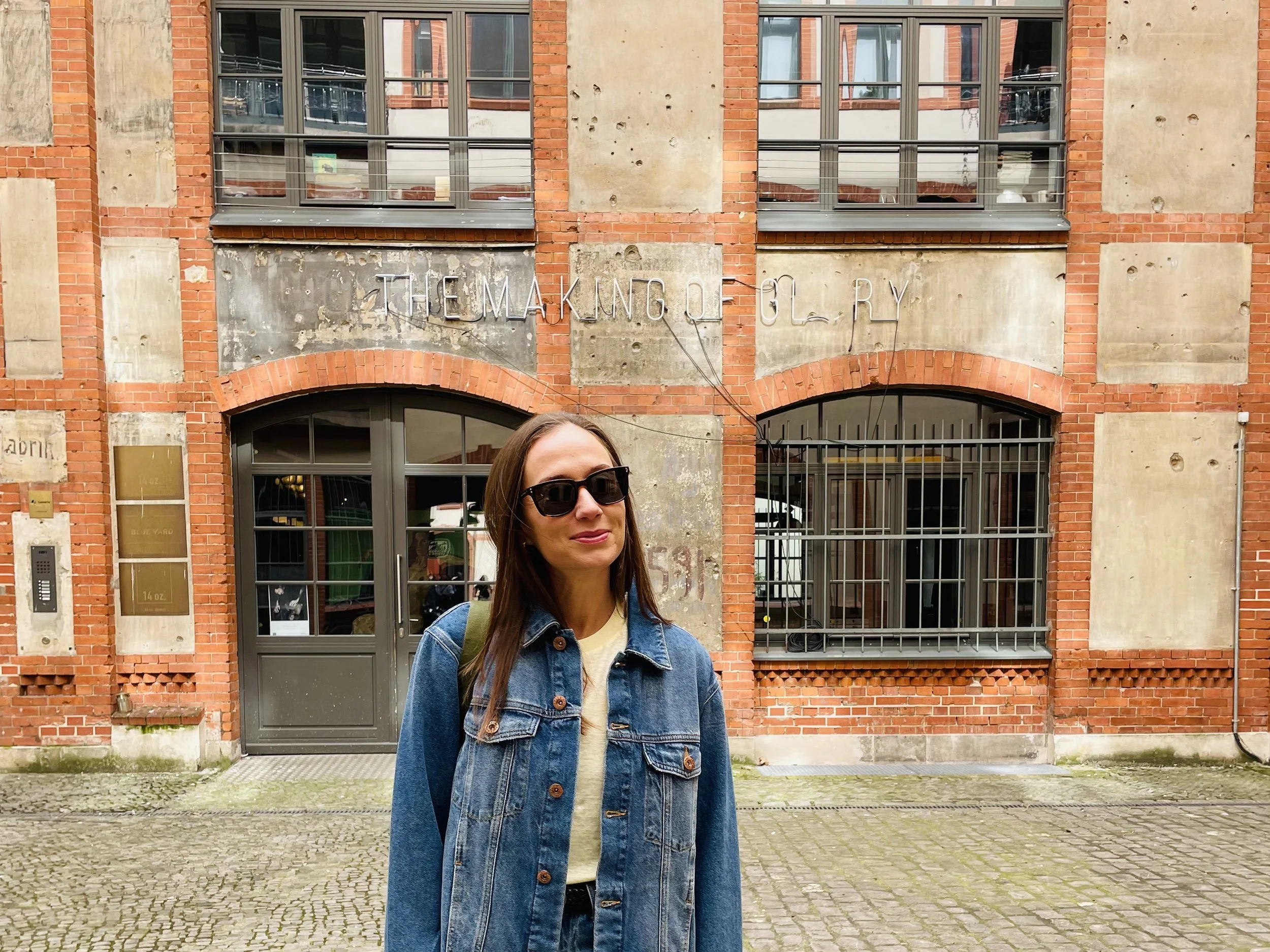Corisca: The Southeast
Corsica is known for its beautiful coastline (it’s an island, after all!), but the south is particularly famous for its dreamy, Tahitian-esque beaches. Indeed, the beaches were the main reason to base in Santa Giulia. And even though this part of Corsica is a little less rugged and dramatic, it is no less picturesque.
[This is Part 2 of a two-part series. Click here for Part 1. Click here for our full Corsica itinerary]
Day 6: Beach and chill
In the morning, the sea at Santa Giulia was like glass. We took a long walk along the empty beach, watching the water shift in color as clouds passed overhead.
May 1st is Labor Day, a holiday that’s actually observed and celebrated in Europe. With most places closed, we leaned into the spirit of the day and took a well-earned break from the hard labor of holidaying. In the afternoon, the weather turned unpredictable. So, we read, napped, wandered down to the beach to jump in the water when the sun broke through, dashed back when the rain returned.
Rain on vacation can be a bummer, but some days, there can be something lush and whimsical about it. Today, it added to the relaxation, creating a lazy, tropical atmosphere that just fit the mood perfectly. Consider Labor Day appropriately observed.
Day 7: Day trip to Bonifacio
There was no rain today, but the wind was incredibly strong, with sudden gusts that I felt would knock me over. Swimming was out of the question, so instead, we drove 45 minutes to visit a place that pictures simply don’t do justice: Bonifacio.
Bonifacio, a medieval citadel perched precipitously on crumbling limestone cliffs, is one of the most visually stunning towns I’ve ever seen. The location is remarkable, if not completely mind-boggling, built as if it was daring the elements to take it down. One has to wonder how this town, the oldest town in Corsica, has managed to last this long without tumbling into the sea.
We parked a bit outside of town, and took the high coastal path that led above and along the cliffs. The wind whipped up whitecaps across the saturated blue water, adding even more intensity to the already dramatic landscape. The closer we got to Bonifacio, the more its dizzying perch came into focus. Erosion at the base of the cliffs gives the entire town a precarious, top-heavy appearance, with buildings that seem to hang over the ocean. Beautiful - if only slightly vertigo-inducing. I’ve really never seen anything quite like it.
Once inside the citadel walls, it’s the familiar Old Town maze of cobblestone alleyways and sunwashed piazzas. The old city walls softened some of the wind’s force, but I was still more than ready to get out of it for a while. We ducked into a small restaurant serving big platters of Corsican food. Raunaq ordered a whole grilled fish, while I got a plate with a melange of local specialities. The star of the show was the Corsican charcuterie. Their cured meat gets its unique taste from the wild boars on the island who forage for fallen chestnuts. Everything on my plate, though, was delicious. A real Corsican cornucopia.
Bonifacio for the win.
Day 8: Hiking the Aiguilles de Bavella
Corsica’s most famous hike is the G20, a long-distance trail known to be one of the most difficult in Europe. I had my mind set on hiking a loop trail that connected with one of its most famous stages (the section around the granite Aiguilles de Bavella mountains). Unfortunately, despite a promising weather forecast, it was raining when we got to the trail head, with even stronger gusts of wind than the day before. Raunaq and I sat in the car in the parking lot for about 30 minutes, hoping we could wait out the worst of it. The rain subsided - the wind did not. But, I had been looking forward to this hike the whole trip, so we decided to go for it anyway.
The first half was mainly a steep, rocky scramble. It gave me a whole new respect for G20 hikers - these trails are hard! We were doing fine until we reached a section I’d read about: a short stretch requiring you to haul yourself up (or down) chains bolted into a sheer rock face. But there, we hit a bit of a roadblock.
Two young French girls were ahead of us, and one had frozen in fear halfway down. Her friend did her best to coax her along, but she wouldn’t budge. A line began to form as more hikers arrived, all of us hunkered down against the wind and rain. It was tough to watch because 1.) I’ve been there, and know exactly how she was feeling at that moment, and 2.) there was a growing undercurrent of frustration from the waiting hikers, as we were all stuck not moving in the freezing cold. Eventually, a hiker coming from the opposite direction helped her back up the rock. After that, I was just so eager to move and warm up that I didn’t even really think about being scared, although it was a tough descent down the slab. Both the rock and chains were slick with rain, and it was hard to get a good grip to rappel down.
It wasn’t until I looked back at the rock and saw how tiny the hikers looked clinging to it that it really hit me: Dang. I did that. You all know I’ve struggled with a fear of heights, and this felt like a genuine turning point. Go me!
We had passed the most technical part of the trail, but the rest of it was no simple stroll, and the elements didn’t make things any easier. The wind was absolutely relentless, making us work extra hard for every step. Some gusts were so strong they would almost knock us off balance. Fog rolled in and out, and it would rain sporadically. But even so, it was beautiful. Every so often the clouds would part, and we would catch a glimpse of the ocean or the tops of the jagged peaks.
That’s hiking in Corsica, though. Everything feels a bit more rugged and wild. It wasn’t until the last hour (of a six-hour hike) that we got the brilliant blue skies we were forecasted.
Day 9: Beaches & Bastia Ferry
On our last day, the weather was perfect. Ten out of ten, no notes.
We had a midnight port call in Bastia for our overnight ferry, and the plan was to slowly make our way back up the western coast. First, a final morning walk on our local beach. Then, we headed to Palombaggia, a beach near Porto-Vecchio that might just be Corsica’s most postcard-perfect spot: stretches of soft white sand meet clear turquoise water, framed by clusters of granite rocks and scattered umbrella pines that lean toward the sea. It’s like a Caribbean dreamscape.
My favorite thing about these southern beaches is the long, shallow sandbars - you can wade far out into the water with the sea around your ankles. It makes it much harder for sharks to sneak up on you.
By sunset, and quite begrudgingly, we began the drive north. We reached Bastia and had a late dinner at a nice seafood restaurant, where I felt very underdressed in my Birkenstocks that exposed my sandy toes. At 11pm, we were back in line for the ferry, waiting for them to slap another Corsica Ferries ‘24 sticker on our car.
For this ride, we splurged and booked a cabin. We saw plenty of people sleeping on chairs or the floor (some even came prepared with blow-up mattresses), but since we had a full day of driving ahead, we figured it was worth trying to get a decent night's sleep. The cabins aren’t exactly luxurious, but they’ve got everything you need for a six-hour crossing, including a shower with actual hot water. I was quite grateful for this, as getting into bed with dried salt and lingering sand on your skin is not ideal. Right before bed, I made the poorly timed mistake of joking to Raunaq about the Titanic. Naturally, once the lights were out, I couldn’t stop thinking about the fact that we were on a giant floating metal box filled with hundreds of cars, bobbing somewhere in the middle of the sea.
Day 10: Drive Home
I did manage to fall asleep - only to be jolted awake, bleary-eyed, by the ferry staff pounding on our door at 6 a.m. By 7, we’d deboarded in Savona and begun the long drive back to Zurich.

















